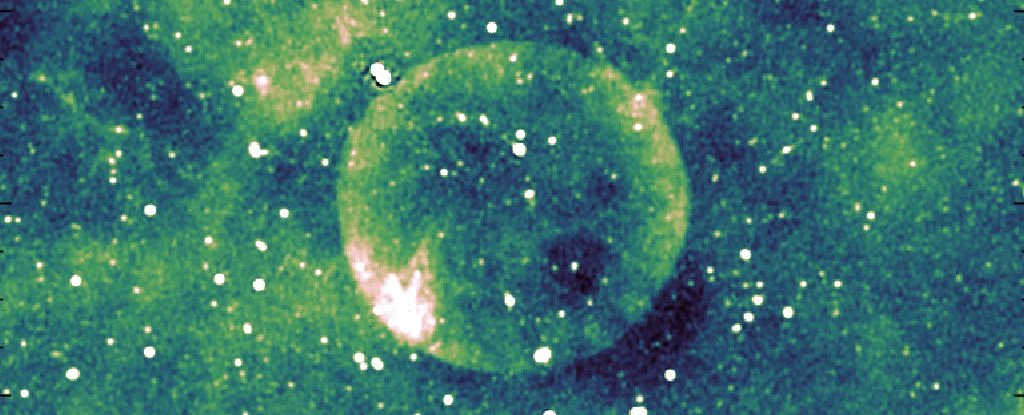
‘Teleios’: Astronomers Baffled by Perfectly Spherical Supernova Remnant Defying Explanation
In the vast and chaotic universe, a rare find has astronomers scratching their heads: a supernova remnant dubbed 'Teleios', Greek for 'perfect,' boasts an almost perfectly spherical shape. This unusual symmetry is raising questions about its formation and evolution, as detailed in a recent study submitted to the Publications of the Astronomical Society of Australia and available on arXiv.
The discovery, made using the Australian Square Kilometer Array Pathfinder (ASKAP), reveals Teleios as a galactic supernova remnant, an expanding cloud of debris from a star's explosive death. However, its near-perfect circularity sets it apart from most SNRs, which tend to be asymmetrical due to various factors like uneven explosions or interactions with interstellar matter.

One of the key challenges in understanding Teleios lies in determining its distance from Earth. Estimates place it either around 7,175 or 25,114 light-years away, leading to dramatically different interpretations of its size and age. At the closer distance, it would be about 46 light-years wide and relatively young (under 1,000 years). The farther estimate results in a much larger cloud, approximately 157 light-years across, suggesting an age exceeding 10,000 years.

Adding to the mystery is the lack of X-ray emissions from Teleios. Standard models for Type Ia supernovae, which occur when a white dwarf star accumulates too much mass and explodes, predict detectable X-rays. The absence of these emissions forces astronomers to consider alternative explanations.
One such scenario suggests that Teleios could be a Type Iax supernova remnant, a less common event where the white dwarf survives the explosion, leaving behind a 'zombie' star. This scenario aligns better with the observed radio wavelengths but requires Teleios to be much closer to Earth, approximately 3,262 light-years away. However, independent measurements haven't confirmed this proximity.

Researchers suggest that the perfect symmetry might result from a symmetrical supernova occurring in a relatively empty region of space, allowing for undisturbed expansion. This is considered a rare but plausible event. The team emphasizes the need for further, more sensitive observations at multiple frequencies to unravel the secrets of Teleios.
The team's paper concludes: "While we deem the Type Ia scenario the most likely, we note that no direct evidence is available to definitively confirm any scenario and new sensitive and high-resolution observations of this object are needed."
Teleios's unique characteristics – its perfect shape, uncertain distance, and missing X-ray emissions – present a compelling puzzle for astronomers. What do you think could explain this cosmic anomaly? Share your thoughts and theories in the comments below!